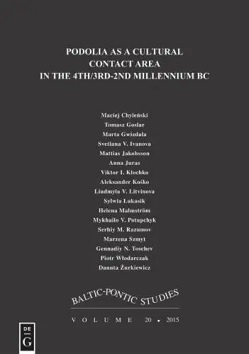Changes in Late Funnel Beaker Pottery at the End of the 4th Millennium BC on the Polish Lowland: Case of Mrowino, Site 3. Preliminary Report on Mineralogical and Petrographic Research
Changes in Late Funnel Beaker Pottery at the End of the 4th Millennium BC on the Polish Lowland: Case of Mrowino, Site 3. Preliminary Report on Mineralogical and Petrographic Research
Author(s): Anna Rauba-Bukowska, Marzena Szmyt, Danuta ŻurkiewiczSubject(s): Archaeology
Published by: Uniwersytet im. Adama Mickiewicza w Poznaniu
Keywords: pottery; raw material; grog temper; Funnel Beaker culture; Baden culture influences;
Summary/Abstract: Archaeological site no. 3 at Mrowino is located on the Polish Lowland, in the Greater Poland region. It was excavated from 1973 until 1980. The excavation produced very rich movable finds, with the core of them being formed by Funnel Beaker culture (FBC) ceramics. The collections hold over 37,500 FBC pottery shards and several intact or reconstructed vessels. The vast majority of pottery comes from an FBC settlement dated to 3300-3150 BC. The pottery set includes vessels of clear Baden culture connections. For the mineral-ogical and petrographic study, 40 samples were selected to identify mineral and rock components of the ceramic body and compare the ways of raw-material preparation. In the studied samples, boulder clay in all probability was used to make the vessels. All studied samples were made from clay with grog and a small amount of sand as temper. In addition, several samples contained igneous rock crumbs. To find out if this was a deliberate or accidental admixture, it is necessary to carry out further research.
Journal: Baltic-Pontic Studies
- Issue Year: 2020
- Issue No: 24
- Page Range: 204-219
- Page Count: 16
- Language: English

